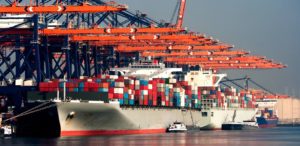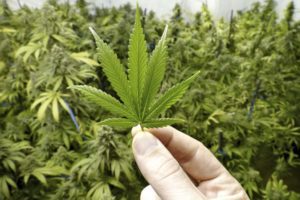
Pivdenny seaport (Odesa region), the largest seaport in Ukraine in terms of transshipment volume, increased cargo transshipment by 28.4% in January-September 2019 compared to the same period in 2018, to 38.658 million tonnes.
According to information from the Ukrainian Sea Ports Authority, for the specified period the port increased transshipment of exported cargo by 36.4%, to 28.304 million tonnes, imported freight by 6%, to 5.292 million tonnes, transit by 19.1%, to 5.043 million tonnes.
In January-September, the seaport handled only 12% of the volume of cabotage cargo compared to the same period in 2018, which amounted to 17,450 tonnes.
According to the nomenclature of cargo, in January-September the port raised transshipment of liquid cargo by 10.3%, to 3.265 million tonnes, dry bulk cargo by 34.8%, to 32.285 million tonnes, and reduced transshipment of packaged goods by 2.9%, to 3.107 million tonnes.
Container transshipment amounted to 144,985 TEU (an increase of 87.8% compared to the same period in 2018).
As reported, in 2018 the port increased transshipment of goods by 1.92% compared to 2017, to 42.702 million tonnes.
Pivdenny port was founded in 1978. It is located on the Adzhalyk firth and is the deepest harbor in Ukraine. The length of its berths is around 2.6 kilometers.

Ukraine’s State Forest Resources Agency has launched a pilot project of an electronic registry of logging permits, Viktor Melnychenko, the Director General of the agency’s Forestry Innovation and Analysis Center, has said.
“This is a register of permits that give the right to carry out business activities related to the harvesting of wood. The register of logging tickets covers the entire territory of Ukraine. We collected all the data in one place and started making it available to the public about a month ago,” Melnychenko said at a press conference at the Interfax-Ukraine news agency.
Melnychenko said as of October 16 information on 27,000 issued permits for timber harvesting was published in the register.
In addition, the center presented an online map of timber felling, which also works in a pilot mode and extends to three regions, including Chernihiv, Poltava, and Rivne.
“Today we are working on a system of graphical display of logging on a map of Ukraine in three pilot regions. A month since we started uploading maps. Now we are solving a number of technical issues. By the end of the year, we plan to extend the project to all of Ukraine for enterprises of the State Forest Resources Agency,” Melnychenko said.
In addition, the center plans to launch a register of forest tickets for the industrial gathering of berries, mushrooms, honey, and medicinal herbs. The project is at the final stage of development.
Melnychenko said he expects the parliament to consider and adopt a number of legislative initiatives that will allow the distribution of the electronic wood accounting system, a register of logging and forest tickets and an online logging map for all permanent forest users who also harvest wood, regardless of subordination.
A logging ticket is permission to harvest wood and contains information about the location and volume of the workpiece. The document is issued by the regional forestry and hunting departments at the agency.
The total forest area of Ukraine is about 10.4 million hectares. The forest cover of the country is 15.9%.
Some 7.6 million ha of forests are subordinated to the State Forest Resources Agency (73% of the Forest Fund of Ukraine).

Nordic Environment Finance Corporation (NEFCO) since 2010 has implemented 243 municipal and private energy efficiency projects in Ukraine, and the total investment has reached EUR 226 million.
According to NEFCO Managing Director Trond Moe, in particular, 179 projects worth EUR 119 million were implemented in the municipal sector and 58 projects worth EUR 89 million in the private sector. In addition, six more projects were implemented with financial institutions for a total of EUR 18 million.
Moe said at a meeting with reporters on Thursday in Kyiv that the largest NEFCO office after its head office in Helsinki is located in the Ukrainian capital.
Ukraine is now the most important country for NEFCO. But in general, the corporation worked on projects in 80 countries, completing more than 1,300 projects. Last year, NEFCO implemented 124 new projects, most of them in Ukraine, he said.
All these projects, according to Moe, contribute to Ukraine achieving an increase in the share of renewable energy of integrated consumption, while reducing CO2 emissions.
By providing financing and sharing risks, NEFCO makes it possible for Northern European companies to invest in Ukraine and at the same time support Ukraine in the transition to clean and sustainable energy, the NEFCO managing director said.
The company plans to continue close cooperation with Ukraine regarding the implementation of energy efficiency projects and the reduction of CO2 emissions.

Kyivstar, a mobile operator, has connected 50 more settlements in Vinnytsia, Zhytomyr, Zakarpattia, Ivano-Frankivsk, Lviv and Khmelnytsky regions to the 4G network, the company’s press service has said.
Such an opportunity, in particular, appeared for subscribers in the settlements of Turbiv, Perehinske, Bilohirya, Hnezdychiv, Iziaslav, etc.
Kyivstar’s 4G network operates in 6,867 settlements, 90% of which are located in rural areas. The total number of residents in the territory of 4G accessibility is over 29 million people, or 70% of the population of Ukraine.
Over 7.5 million subscribers used 4G services in Kyivstar network.
Kyivstar is a Ukrainian telecommunications operator. It provides communications and data transmission services based on a wide range of mobile and fixed technologies, including 3G. At the end of 2018, its services were used by about 26.4 million mobile subscribers and about 900,000 fixed Internet customers.

The decision to legalize medical cannabis will be made, but not hastiliy, Mykhailo Radutsky, head of parliament’s committee on national health, has said.
“We believe that medical cannabis should be available in the country, but we do not want to rush with this issue … We do not promise to do this in turbo mode, we will study very carefully so that, God forbid, not to make mistakes. Do not expect a quick decision from us, but there will be a solution, and this initiative is definitely not bad for the country,” Radutsky said at a briefing in Kyiv on Thursday.
He recalled that several bills on the use of medical cannabis are under consideration by the relevant committee.
According to David Arakhamia, the leader of the Servant of the People faction, the legalization of medical cannabis is a very good initiative.
“We are talking about medical use with very high state control. This must be done because two million people in Ukraine feel pain every day,” said Arakhamia.